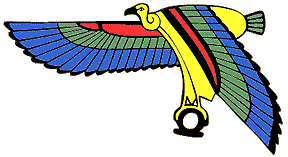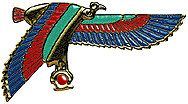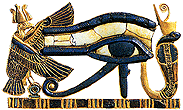 Nekhbet
Nekhbet

(aka Nekhebet, Nechbet)

Nekhbet is often represented as a vulture, as a woman with the head of a vulture
or as a woman wearing the Atef-crown.
Her name means "the one of Nekheb".
Her most important epithet "the White One of Nekhen" relates her to Hierakonpolis.
She is the personification of the White Crown of Upper Egypt, and as such,
she is
associated with her Lower-Egyptian counterpart, Uto.
Both goddesses are often
represented together, crowning the king .
By extension, she is not only the goddess
of the White Crown, but also the patron goddess of Upper-Egypt.
As a vulture-goddess, Nekhbet is the goddess of heaven, sometimes related to the
sun
when she is called "the Eye of Ra" and other times to the moon.
She is also the
protectress of the king and of the non-royal deceased.
As such, she is represented
as a vulture extending one wing to the front, the other to
the ground, flying above the
person she is protecting.
Nekhbet was also sometimes considered a
Goddess of childbirth, often shown suckling
the
royal child or even the King himself.
Nekhbet was the predynasticvulture goddess who was originally
a goddess of a city,
but grew to become patron of Upper Egypt, a guardian of mothers and children, and one of
the nebty (the 'two ladies') of the pharaoh.

Nekhbet (right) and Uto (left) crown the King.
From
a scene at the temple of Horus at Edfu.


Nekhbet's sister was Wadjet, and together the two were known as the Nebti.
As a pair, they represented cycles of birth and death, beginning and ending.
In the illustration above, Nekhbet and Wadjet are guarding the Eye Of Ra,
the Utchat.
Nekhbet is wearing the white crown of Upper Egypt,
and
Wadjet is wearing the red crown of Lower Egypt.
  |

  |